Is AI a climate hero or climate villain?
September 25, 2024
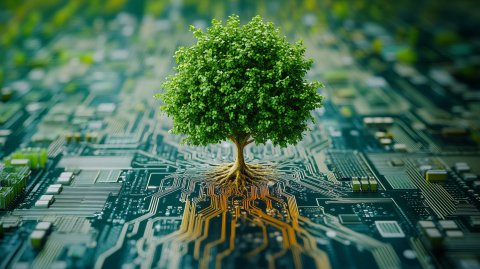
The vacant buildings and abandoned works of the old steel mill in Midland, Pennsylvania, speak to the Ohio Valley town’s industrial past. Crucible Steel employed thousands here for nearly a century, driving the local economy before it shuttered in the industry’s downturn decades ago, leaving yet another rust belt artifact behind. But Mawson Infrastructure Group CEO Rahul Mewawalla sees something else in the industrial waste: energy for a data center to make this small town just east of the Ohio state line part of the AI revolution.
“The underlying bones of the power infrastructure are there,” Mewawalla told Newsweek. Old industrial sites like the Midland steelworks used massive amounts of electricity, and the high-power connections were still in place when the mill closed.
Mawson now has some 60 modular tractor-trailer-sized data center units humming away on 8 acres of the former Crucible Steel site, crunching zeroes and ones for digital customers. The gleaming metal of the data units are a sharp contrast to the grimy remnant structures and railroad tracks.
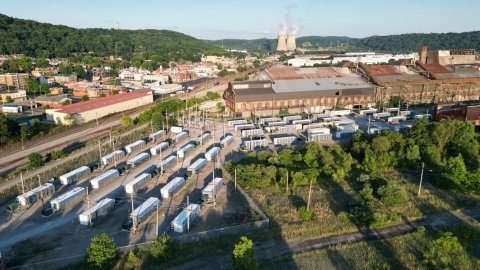
Midland Facility
Courtesy of Mawson Infrastructure Group
But the graphic processing units, or GPUs, inside the data centers that make much of generative AI possible are energy hogs—gulping down electricity and belching out high heat—which, in turn, require even more power for cooling to keep the servers at operational temperature. Mewawalla said the recent addition of an AI customer spurred Mawson to expand to 120 megawatts of computing power in Midland.
With billions of dollars currently flowing into AI and the technical infrastructure it requires, how we decide to both power and then apply the technology could determine if AI proves to be a climate hero or a climate villain.
With water for cooling from the Ohio River and a nearby link to the fiber-optic network in Pittsburgh, the old steelworks has the essential ingredients for a data center. Most crucially, though, on the opposite side of the river is the Beaver Valley Power Station, a nuclear plant slated for closure five years ago but was kept open by its new owners, giving the data center plenty of carbon-free electricity.
“If you want to work with marquee AI customers, you’ve got to have clean energy,” Mewawalla said.
Estimates of AI energy use vary greatly, but one study found that generating an AI image for one popular model used as much power as fully charging a cellphone. Another study found that web searches with generative AI used 10 times the energy needed for a standard search. Training a large language model is also energy intensive. Training OpenAI‘s ChatGPT-4, by one estimate, may have used as much energy as 4,800 average American homes over a year.
An Electric Power Research Institute report this year estimated that by the end of the decade, data centers could gobble up 9 percent of all U.S. electricity generation, up sharply from about 4 percent today. “Based on everything we’re seeing, that’s probably an understated number,” Mewawalla said. “The demand is much more than what most people are envisioning.”
The race is on to secure all forms of power for the AI boom. On Friday, Microsoft announced an agreement with electric utility company Constellation to purchase 835 megawatts of nuclear power for its data centers in the Northeast and Mid-Atlantic, paving the way to restart a reactor at Pennsylvania’s infamous Three Mile Island nuclear power station.
Also in Pennsylvania, Amazon Web Services purchased a data center in March attached to Susquehanna Steam Electric Station nuclear plant. Then in May, Amazon broke ground on its first industrial-scale solar facility, a 150-megawatt array in Southern California with massive batteries to store power for use after dark.
In August, Microsoft launched a partnership to build 500 megawatts of community-scale solar power across the country over the next five years. Later that same month, Meta, parent company of Facebook, announced a deal to buy 150 megawatts of geothermal power to supply data centers.
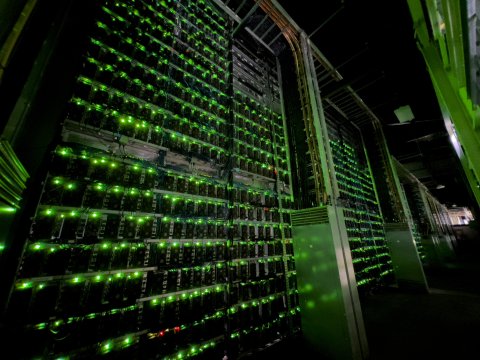
ASICs
Courtesy of Mawson Infrastructure Group
But even with those mass-megawatt clean energy investments, the bulk of U.S. electricity in most parts of the country still comes from burning fossil fuels, especially natural gas. As utility companies anticipate a spike in demand, some gas-fired generation is being expanded while retirements of some old, dirty coal burners are being delayed.
That means the AI data center boom is also driving up fossil fuel consumption and greenhouse gas emissions, even at some tech companies with reputations for ambitious climate goals.
Critics in some environmental groups said the numbers reveal a different priority. “They are interested in winning the AI market, and they’re going to do anything in their power, including paving over the environment, to get there,” Michael Khoo, Climate Disinformation Program director at Friends of the Earth, told Newsweek. “I feel pretty despondent about the prospects of Silicon Valley ever meeting climate targets if they continue on this path.”
However, AI and machine learning are also being applied to some of the toughest problems in clean tech and climate science. Researchers are already using these new tools in a wide range of climate-related applications, such as aligning intermittent renewable energy with the power grid’s needs, improving predictions of climate-driven fires and floods and aiding discoveries of materials used in clean tech.

Profile shot of Amen Ra Mashariki
Courtesy of Amen Ra Mashariki
Amen Ra Mashariki directs AI and Data Strategies at the Bezos Earth Fund in Washington, D.C., and oversees its AI for Climate and Nature Grand Challenge. The contest offers $100 million to support the best proposals applying AI to biodiversity conservation, sustainable proteins for agriculture and power grid optimization.
As Mashariki sifted through the submissions to pick the first-round winners, he saw examples of how AI can help scale up climate solutions, and he thinks we’re just scratching the surface of what’s possible. “This grand challenge is the opportunity to see what can happen,” he said.
Big Tech’s Climate Conundrum
The money flowing into AI can encourage clean energy development in regions that still depend heavily on fossil fuels. “Because the revenues around AI infrastructure and the margins are very healthy, we have the ability to provide new economic incentives to now invest more heavily in carbon-free energy,” said Mawson CEO Mewawalla.
But despite Big Tech’s clean energy spending spree, the most recent sustainability reports from Microsoft and Google both showed sharp jumps in greenhouse gas emissions in 2023, largely due to their AI growth. Both companies said they remain committed to net-zero emission goals.
“We’re not letting up on any of our sustainability objectives,” said Bobby Hollis, energy vice president at Microsoft, which ranks fifth among software and telecommunications companies on Newsweek‘s list of America’s Most Responsible Companies. The company has set a goal to be carbon-negative by the end of the decade by both cutting greenhouse gas emissions and investing in ways to pull carbon dioxide from the atmosphere.
However, the company’s sustainability report showed aggregate emissions for 2023 were up 29 percent compared to 2020. Hollis said there has been a lag between the rapid growth of AI and the clean energy available. He said the company is working on projects to bring additional carbon-free resources to the grid. “What you’re seeing now is a real motivation to do them as quickly as possible so that we don’t have to add additional resources that don’t meet the carbon-free objectives,” he said. Hollis predicted that improvements in efficiency at data centers will also blunt the rising energy demand.
Work is underway to make the next wave of AI chips and servers less energy intensive and to improve the cooling systems in data centers so that they require less water and energy. One promising development submerges the AI GPU server in an oily liquid to draw away heat, greatly reducing energy needs. But some researchers investigating AI’s climate impact point to an ironic twist: as AI becomes more efficient, we will likely make even greater use of it, burning through just as much energy, if not more.
It’s an old economics concept called the Jevons Paradox, named for the 19th-century English economist William Stanley Jevons, who observed more coal being burned even as furnaces became more efficient. “I think that we’re seeing that with AI,” said research scientist Sasha Luccioni, who is the climate lead at the machine learning research company Hugging Face. Luccioni said AI techniques and hardware are getting more efficient. “But we’re also using it in so many new different places that we’re losing any of those gains,” she said.
Luccioni is working on an assessment of the energy use and carbon footprint of different AI models in hopes of providing AI users with a way to comparison shop based on climate concerns. Think of it as an Energy Star rating system for AI.
“I think that for a lot of people, this would be food for thought at least, and maybe a way of changing or nudging behaviors,” she said.
However, she and other researchers said that work is difficult because many tech companies are not sharing the necessary data. Emma Strubell, an assistant professor at Carnegie Mellon University and a visiting researcher at the Allen Institute for AI, told Newsweek, “There’s not sufficient information reported, particularly about the most widely used models.”
Strubell and Luccioni joined with other AI and sustainability researchers to support legislation calling for more transparency about AI’s energy footprint. Democratic Senator Ed Markey of Massachusetts introduced the AI Environmental Impacts Act in Congress early this year. Salesforce supports it, but the bill has yet to gain support from most tech companies. Representatives of Microsoft and Meta declined to comment on the bill.
“I think there’s going to be a really large impact, and we’re going to look back and wish that there had been more regulations and monitoring in place,” Strubell said.
MIT Assistant Professor Priya Donti is co-founder and chair of Climate Change AI, a research group that sponsors AI projects on a range of climate and energy issues, from cleaner manufacturing in U.S. facilities to better flooding predictions for residents of Fiji. She’s enthusiastic about AI’s climate benefits but wary of some other ways AI is used. “I don’t think that AI for climate is snake oil,” Donti told Newsweek. “But it’s actually important to also consider the applications of AI that are making climate change worse.”
She said the technology has also been applied to the oil and gas industry to accelerate exploration and extraction of petroleum reserves. She added, “It’s a big driver behind targeted advertising which has implications for how we consume.”
Meeting the Power Challenge
U.S. Energy Secretary Jennifer Granholm launched a press briefing last month with a question she knew was on reporters’ minds. “The explosive growth of AI is posing this big question, are we going to have enough energy to power AI?”
Granholm then answered her own question.
“We emphatically say ‘yes, we will,'” she said and listed the ways her department is supporting AI development and promoting clean energy to power it. She said the country is on track to deploy more than 60 gigawatts of clean energy and energy storage capacity this year. “That’s like building 30 Hoover Dams just in one year.”
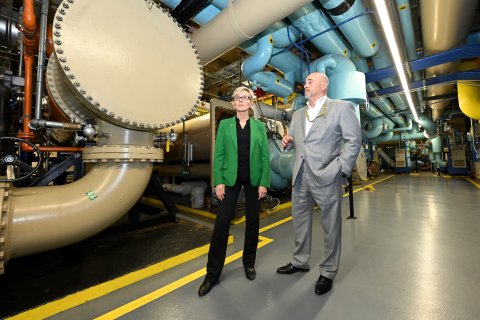
(L-R) Secretary Jennifer M. Granholm and Timothy Dailey are seen as Secretary Jennifer M. Granholm Lights the Empire State Building at The Empire State Building on April 18, 2024, in New York City.
Roy Rochlin/Getty Images for Empire State Realty Trust
Yet many questions remain about how quickly clean energy can be connected to the grid and AI data centers. David Porter is vice president of Electrification and Sustainable Energy Strategy at the Electric Power Research Institute. He said EPRI is working with tech companies and electric utility companies to meet the demand for clean electrons.
“The biggest challenge for the utility executives is still the timing and how quickly they can bring resources to bear to match up with the data centers,” Porter said.
A new data center can be ready to go in just two years, Porter said, but the transmission lines to carry electricity from, say, a new solar or wind facility to that data center can take four or five times as long.
“If you need to build a new transmission line in the United States, that’s an eight-to-10-year process from planning to permitting to construction,” he said. “So that’s a big difference.”
Porter said that for many power providers, the fastest way to add more electricity generation capacity is with new gas-fired turbines—not exactly a win for climate action. In one region after another, electric utilities are projecting and planning for large increases in electricity demand. In the Carolinas, for example, Duke Energy projects eight times the electricity load growth by 2030 that the utility company had anticipated just two years ago, much of it due to growth by technology companies.
“We’re committed to finding smart, responsible ways to meet that demand with cleaner energy,” Heather Quinley, Duke’s managing director for ESG & Sustainability, told Newsweek via email. She said the company is investing in a range of energy sources, including a “significant buildout of renewables.”
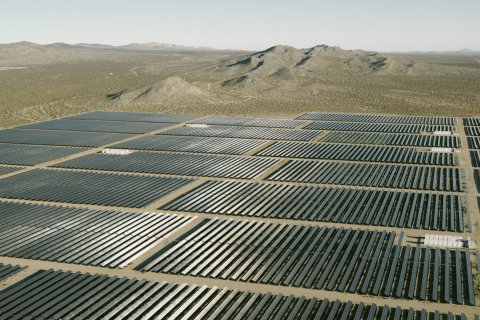
At a White House energy event this summer, Duke announced an agreement with major electricity consumers such as Amazon, Google and Microsoft to innovate on clean energy development and financing. Duke’s approach includes something called Accelerating Clean Energy tariffs, a new rate structure designed to encourage big companies to invest in clean energy technologies such as energy storage or even new nuclear power.
However, Duke also plans on adding more fossil fuel generation, with several new gas-fired turbines in consideration. Clean energy advocates in the region say the prospect of greater data center demand is already pushing Duke off target for reducing greenhouse gas emissions.
“If Duke builds those new gas plants, it will be very difficult for them to meet their decarbonization goals,” Southern Alliance for Clean Energy Research Director Maggie Shober told Newsweek. Shober said the North Carolina legislature set a goal for Duke Energy to reduce carbon emissions by 70 percent by 2030 as part of a longer path to reach net-zero emissions by mid-century. “Duke Energy says they cannot meet that 70 percent reduction goal until 2035,” Shober said.

Profile shot of Heather Quinley
The Machine Photography
Quinley said the addition of natural gas will ensure reliability of power supply while the company closes its remaining coal-burning power stations. Coal is the most carbon-intensive of fossil fuels, releasing more CO2 per unit of energy when burned than does gas. “We know our progress to net-zero will not be linear,” Quinley said. “It will continue to fluctuate as we retire coal generation.”
A Force for Good?
So, is AI villain or hero in this saga? Last month, Suzanne DiBianca, executive vice president and chief impact officer at Salesforce, told Newsweek, “I think, 100 percent, AI will be a good guy as it relates to climate.” She said that the firm, which appears on Newsweek‘s 2024 rankings of America’s Most Responsible Companies, America’s Greenest Companies and the Most Trustworthy Companies in America, plus the 2023 World’s Most Trustworthy Companies, is investing in entrepreneurs who are forging climate-positive uses for AI. “We’re seeing so much innovation.”
Even some of those critical of tech companies’ rush into AI said they recognize the technology’s climate benefits. “I have been one of the people to continually point out concerns,” Carnegie Mellon’s Strubell said. “I also am very optimistic about the potential positive environmental impact.”
Mashariki of the Bezos Earth Fund took the question in a slightly different direction. “What I’m going to say is, ‘I’m very familiar with the hero’s journey,'” he said with a sly grin.
A Star Wars fan, Mashariki pointed to Luke Skywalker as the classic example of a character who faces challenges and a reckoning before becoming a hero. Similarly, AI might have a dark side, but Mashariki said he thinks it will be a force for climate good in the end. “Ultimately, the answer is hero, but we are most certainly on that hero’s journey,” he said. “All of us—from government to philanthropy, private sector, media—all have to be a part of that journey.”
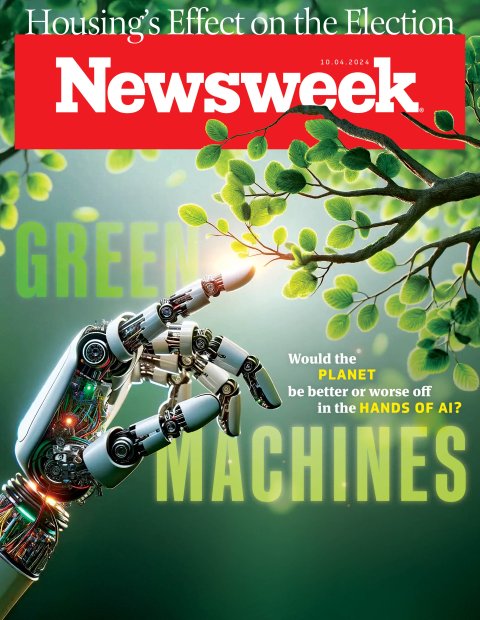
fairness meter
To Rate This Article
About the writer
Search
RECENT PRESS RELEASES
Related Post


